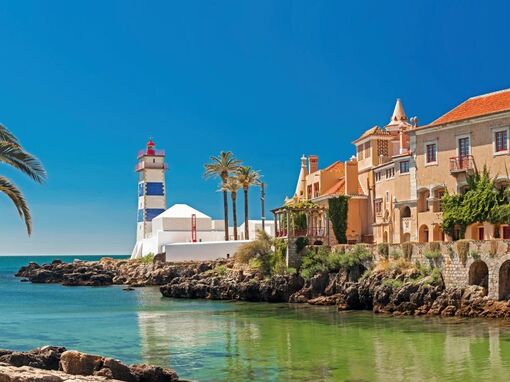
Victoria & Charlie
Victoria & Charlie
Things to Do
Must see in Lisbon
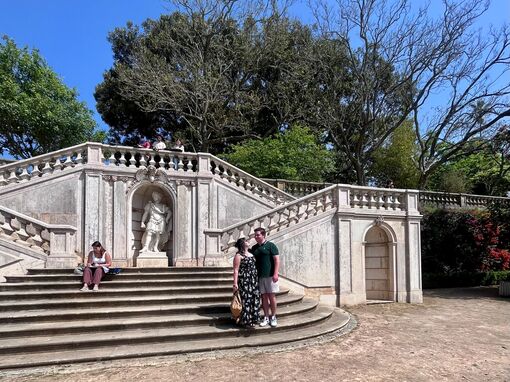
Lisbon is one of the oldest cities in the world, and the second-oldest European capital city, predating other modern European capitals by centuries.
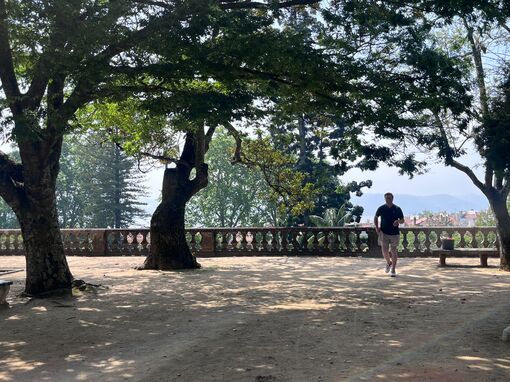
Our recommendations
If you find yourself in Lisbon, there's no shortage of things to see and do. There's lots of accommodation and it's easy to find something. However, we stayed at Riverside editory, which was excellent and if you want to splurge Bahr hotel and restaurant is beautiful. For food and drink we'd recommend the following, start the day with breakfast at all day brunch restaurant, Dear Breakfast. For lunch try O velho eurica, you'll need to book through their instagram or phone them, think small plates, good food, good vibes but be prepared to wait, service isn't the best. There's also a couple of good markets which offer lots of variety all under the one roof, LX market is a vintage market with hippy vibes, and Timeout market is a food hall right in the centre of Lisbon with something for everyone. After lunch if you're feeling thirsty By the Wine is a trendy and reasonably priced wine bar with charcuterie and small plates. For supper we'd recommend the following, Bon Jairdim, cheap and cheerful, think original nandos (chicken, chips and Salad), no reservations but it's a quick turnaround. Fumeria de santa caterina serve a nice mix of small plates in an intimate and cosy restaurant. If you're feeling like treating yourself, Bahr restaurant and terrace is a nice spot for cocktails and fancy dinner. Finally, Lisbon is quite hilly and getting although small getting around can be tiring, luckily there's loads of taxis and uber, both are reasonable. There's tuk tuks located around the city which offer sightseeing tours which are a fun way to see the city
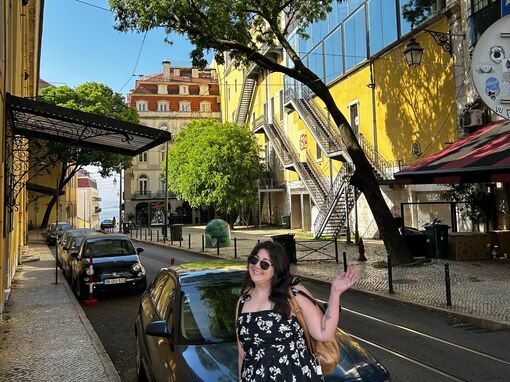
V & C'S FAVORITE EATS
Pastéis de Belém
It doesn’t matter if you have a sweet tooth or not: the world-renowned Pastéis de Belém will win you over with their rich flavour and crunchy crust, not to mention the space that has been their home since 1837 – a vintage bakery café with a large esplanade. Located in one of the city’s prime areas, near Jerónimos Monastery, a visit to Pastéis de Belém is for sure one of the best things to do in Lisbon.

Bifana
If you're looking to eat like a local you can't miss out on a good Bifana. Bifana is typically a sandwich with marinated pork, mustard, and piri piri (chili) oil on a bun. You can find it at cafes, or even bifana stands, around Lisbon but our favorite was at O Trevo in Chiado. O Trevo was also Anthony Bourdaine's favorite stop!

Ginjinha
You'll find this traditional Portuguese liquor served out of small storefronts throughout the city. The liqueur is made from sour cherries, alcohol, sugar, and spices. It's about $1.50 a shot and you can order it with or without a cherry. Be sure to try a place in your neighborhood, here we are pictured in Baixa at A Ginjinha.
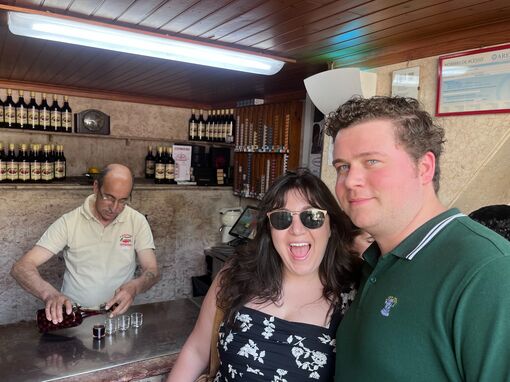
Café de São Bento
Café de São Bento is a fantastic steakhouse that evokes the energy of historical cafés of Lisbon. A self proclaimed institution for 'the true lovers of a good steak', and we agree whole-heartedly. We recommend getting reservations if you plan on stopping here. Make sure to try the traditional Portuguese steak with egg and a martini.
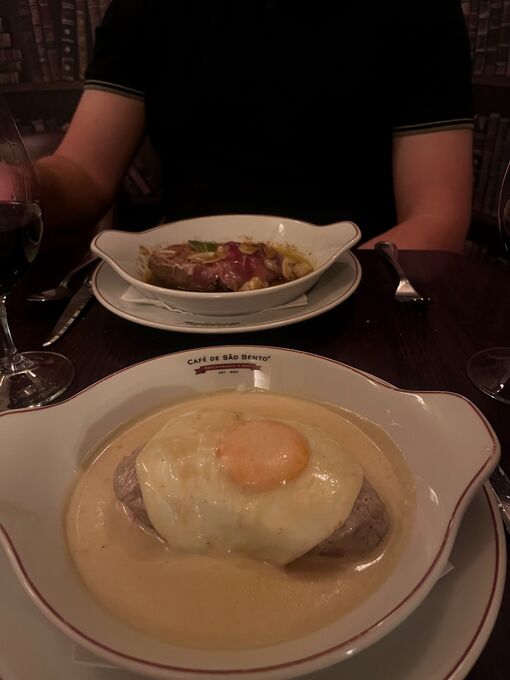
Oven Lisboa
Oven Lisboa is a fine Indian and Nepalese restaurant sure to delight everyone with fantastic meat, vegan, and vegetarian options. Dining here was truly an experience as the food and drinks are as beautiful as they are delicious. Although Oven does not yet have a Michelin star, it is widely believed to be Michelin worthy. We recommend making reservations in advance.
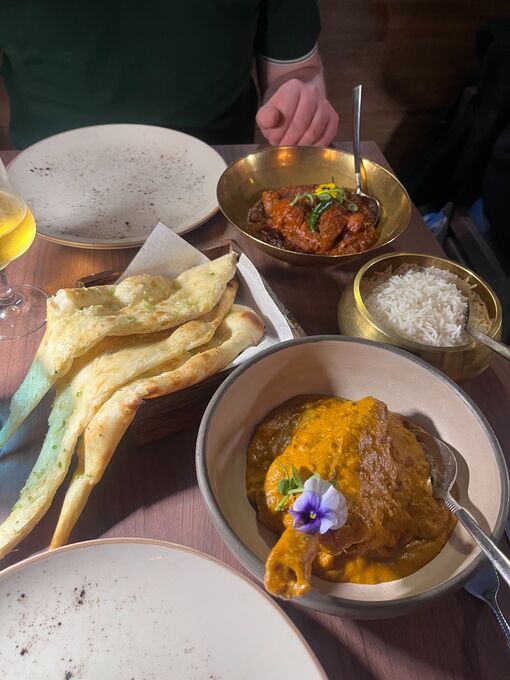
SIGHTSEEING
Miradouro das Portas do Sol
Just a few steps from Miradouro de Santa Luzia, a balcony opens onto the river, offering truly spectacular views over Alfama. Faced by soft-toned buildings and the Decorative Arts Museum, this is a popular stop for photographers, with its stunning view from São Vicente de Fora Monastery to the waterfront.
Augusta Street
Lisbon's main pedestrian street Augusta street.
This is a lively pedestrian street with mosaic pavements, outdoor cafés, international shops, and the occasional street artist and peddler.
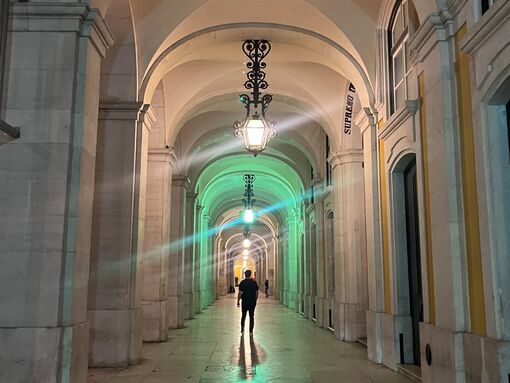
Pimenta Palace
There’s a long-term exhibition at Pimenta Palace - a summer palace dating from the first half of the 18th century and now the headquarters of the Museum of Lisbon - that provides a chronological overview of the development of the city from prehistoric times to the late 20th century, having a large-scale model of the pre-earthquake Lisbon.
Alfama
Alfama must be at the top of your list of places to visit in Lisbon. This neighbourhood is the personification of Lisbon's spirit and culture. Here, you will be captivated by the mediaeval atmosphere of the cobbled narrow streets, the floating sounds of Fado and Portuguese folk music, the vibrant buildings colours, the beautiful artworks and ancient architecture.

Tiles
Azulejo (tile), is an artistic expression that differentiates Portuguese culture. As you wander around Lisbon, you will find many tile panels (and tile-inspired souvenirs) in the most varied places - buildings, fountains, courtyards, and restaurants –, some are centuries old and some are modern and fun. Hence, National Tiles Museum is one of the most important national Portuguese museums of the singularity of its collections, which will allow you a journey through the history of tiles and to some extent, of the country, from the 15th century till the present day.
Tram 28 route
The iconic Tram 28 route is a great opportunity to get a sense of Lisbon’s daily life, as you cruise through the cobbled streets of the city centre. Starting at the hills of Graça and continuing through the historic district of Baixa, before pulling up at the charming Estrela neighbourhood, you are bound to discover the Portuguese lifestyle, as well as years and years of history, as you cross through various important city features, palaces and monuments.

Visiting Cascais and Sintra
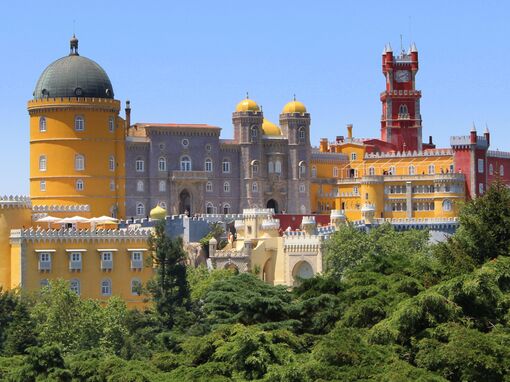
Portugal’s royal family holidayed at Cascais at the turn of the 20th century, and that glamour has never faded. At this beach getaway you can bathe in transparent waters at peaceful coves. Or you can brave the charging Atlantic waves of the Sintra-Cascais Natural Park on a surfboard.
Beach
It isn’t easy picking a favourite beach in Cascais, because they all have their strong points. But if your vision of a perfect beach is a sandy cove lapped by crystalline seas then Praia da Rainha is the one for you. We also recommend Praia de Santa Marta.
Frederico Arouca Street
Here you can find many bars and cafes. The Praça 5 de Outubro is also hemmed by bars and restaurants.
Cascais is small and pedestrian-friendly so you could see it all in an hour or so. The squares and sidewalks are paved with calçada portuguesa, mosaics in various patterns.
https://www.visitcascais.com/en
Estoril Casino
The Casino in Estoril is reputed to be the largest in Europe offering over 1,000 slot machines.
During World War II Estoril was something of a hotspot for exiled royalty and deposed despots, as well as spies from all sides. One such spy was Ian Fleming, the James Bond author, and it is said that his experiences here were the inspiration for his first Bond book - Casino Royale. Interestingly enough much of the later Bond film, On Her Majesty’s Secret Service, was filmed in the Estoril / Cascais area.
Pena National Palace
This UNESCO World Heritage Site is one of the finest examples of 19th century Romanticism anywhere in the world. Pena Park (Parque da Pena), which surrounds the palace, provides over 200 hectares of heavily forested grounds to enjoy. There are a wonderful mix of over 500 different species of trees and shrubs from around the world.
Quinta da Regaleira
António Augusto Carvalho Monteiro was born in 1848 to wealthy Portuguese emigrants in Brazil and augmented his fortune in the coffee and precious stone businesses.
That wealth was funnelled into the bewildering Quinta da Regaleira, which is crammed with small monuments reflecting his fascination with the Masons, Knights Templar and Divination.
His Romantic palace is out of a dream and bursts with Manueline-style masonry, but it’s in the palace park where Monteiro’s eccentric personality comes through: Underground there’s a system of tunnels and grottoes, all intended to confuse and delight.
Above are ornate gazebos, benches with sculptures and two “initiation wells”, deep shafts lined with spiral stairways leading down to sanctums for tarot ceremonies.
Castle of the Moors
Hoisted on one of Sintra’s northernmost peaks are the ruins of a mighty castle, built by the Moors and enlarged after the Reconquista.
The walls have four square towers and snake with the contours of the mountain at the top of a sheer cliff, so it’s a sight to behold from below and is an amazing vantage point from above.
Up between the merlons you can look over the peaks, bluffs and rocky spurs, out to the Atlantic and over Sintra.
Historians can investigate the ruins for some exciting vestiges like the large Moorish cistern that you can enter via a stairway, and the ruins of a Romanesque chapel with frescos in its chancel.
Park and Palace of Monserrate
Monserrate is deep in the mountain range, slightly removed from Sintra’s other palaces, and so isn’t quite as crowded.
But that doesn’t mean you can pass it by, because both the Moorish Revival palace and grounds are glorious.
It was all landscaped in the mid-19th century for Sir Francis Cook, an English aristocrat who was given the title Viscount of Monserrate by King Luís I. The parkland has bamboo plantations, grottoes, man-made waterfalls, ponds, exotic cedars and Oceanic tree ferns.
And as for the residence, the Islamic influence is undeniable, in the latticework in its arches, the arabesque stucco patterns on the stairway and the ceiling of the radiant music room, which hosts concerts to this day.
Cabo da Roca
Sintra’s boundaries go all the way to the coast, and the westernmost point of continental Europe.
Cabo da Roca is the point where the Serra de Sintra sinks dramatically into the ocean.
The cape is 140 metres at the top of a granite cliff and with powerful boulders and outcrops pounded by the ocean far below.
There’s a lighthouse up here, as well as a stone monolith with a cross to mark this headland, which was a famous seamark from Roman times to the Age of Discovery.
The ground up here is a carpet of evergreen ice plants, an invasive plant native to South Africa.
